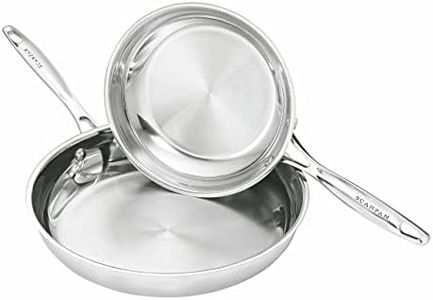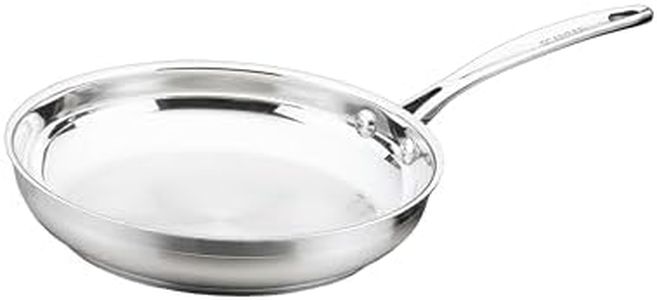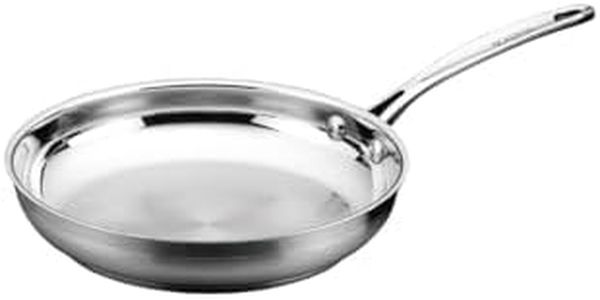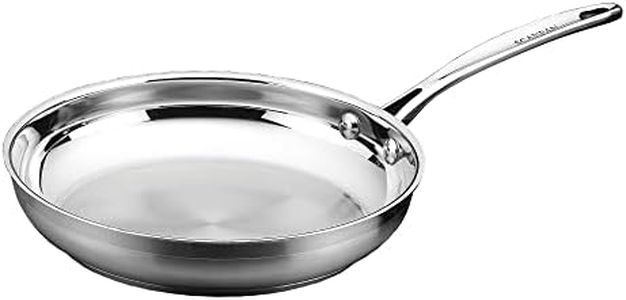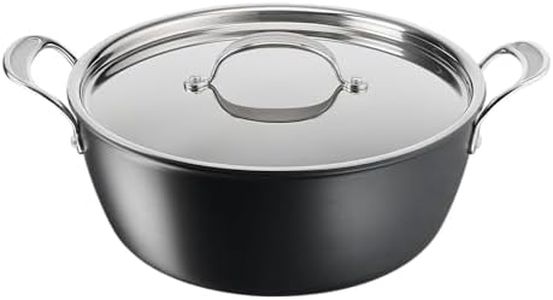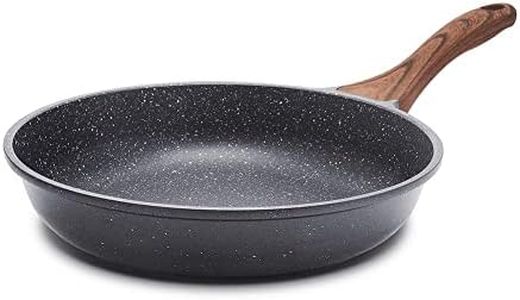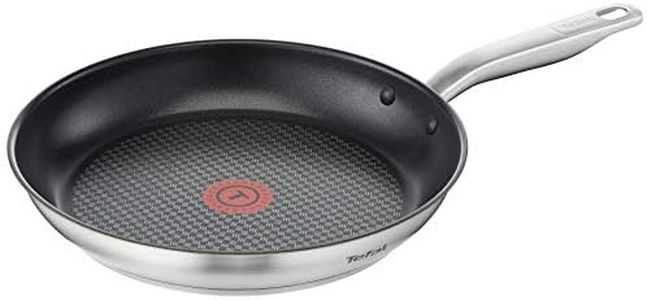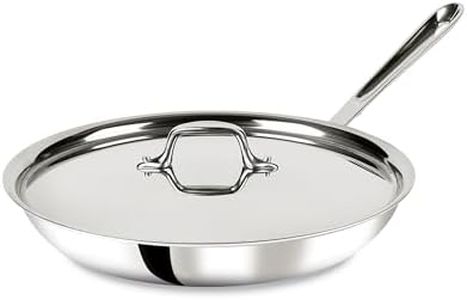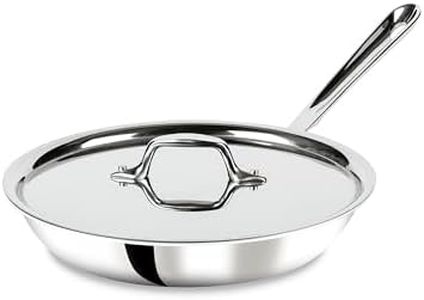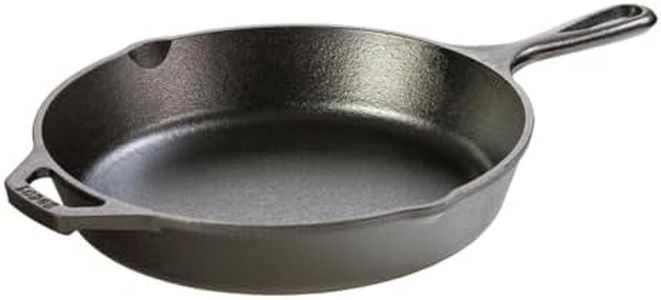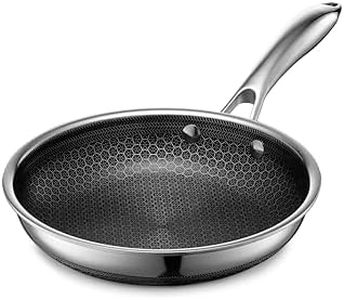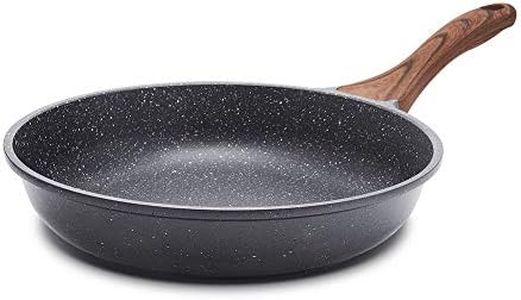We Use CookiesWe use cookies to enhance the security, performance,
functionality and for analytical and promotional activities. By continuing to browse this site you
are agreeing to our privacy policy
10 Best Frying Pan
From leading brands and best sellers available on the web.By clicking on a link to a third party's website, log data is shared with that third party.
Buying Guide for the Best Frying Pan
Choosing the right frying pan can make a big difference in your cooking experience. The best frying pan for you depends on how you like to cook, what types of dishes you usually make, and how much maintenance you are willing to do. Understanding the key features of frying pans will help you pick one that suits your kitchen and cooking style, making meal preparation easier and more enjoyable. Take some time to think about what you cook most often—this will serve as your guide through the main specifications.MaterialThe material of a frying pan affects heat distribution, non-stick ability, durability, and how easy it is to clean. Common materials include stainless steel, nonstick coated, cast iron, carbon steel, and copper. Stainless steel pans are great for searing and deglazing, but may need oil to prevent sticking. Nonstick pans are easy to clean and require little to no oil, but aren't ideal for high-heat cooking and can wear out over time. Cast iron pans retain heat very well, making them excellent for frying and oven use, but need regular seasoning and are heavier. Carbon steel has similar benefits to cast iron but is lighter. Copper pans heat up quickly and respond rapidly to temperature changes, but often have a stainless steel or tin lining for safety and require more maintenance. To choose, think about what you'll cook most–for easy, low-oil meals a nonstick is handy, while for steaks or stir-fries, stainless, carbon steel, or cast iron might serve you better.
Size (Diameter)The size of a frying pan, typically measured in inches or centimeters, determines how much food you can cook at one time. Small pans (around 8 inches/20 cm) are best for one or two eggs or small portions, medium pans (10 inches/25 cm) offer versatility for a couple of servings, and large pans (12 inches/30 cm or more) suit families or big batches. Choosing the right size depends on how many people you usually cook for and the kind of dishes you like to prepare. For most home cooks, a medium pan is a good all-around choice, but you might want more than one size for different needs.
Handle TypeThe handle of a frying pan affects comfort, safety, and sometimes even how you can use the pan (for example, in the oven). Some handles stay cooler than others when cooking on the stovetop. Metal handles are oven-safe and durable but can heat up, while plastic or silicone handles stay cooler but may not be oven-friendly. Ergonomic designs can make the pan easier to maneuver, which is important if you do a lot of tossing or moving between stove and oven. Pick a handle that feels good in your hand and suits your cooking habits—if you finish dishes in the oven, ensure the handle is oven-safe.
Coating/Nonstick SurfaceA nonstick surface prevents food from sticking, making it easier to cook delicate items like eggs or fish and simpler to clean up. There are different types of nonstick coatings, most commonly PTFE (like Teflon) and ceramic. PTFE provides slick performance but cannot handle very high heat; ceramic is more heat-tolerant but may not last as long. Some pans offer natural nonstick properties through seasoning (like cast iron or carbon steel). If you want easy clean-up and low-fat cooking, a coated nonstick surface is helpful; if you prefer durability and high-heat cooking, consider uncoated surfaces or pans that build a natural nonstick layer through seasoning.
Oven-Safe TemperatureNot all frying pans can be safely put in the oven, and those that can may have a maximum temperature limit. This matters if you like to start dishes on the stove and finish them in the oven, such as frittatas or steaks. Metal pans with metal handles generally have the highest oven-safe temperatures, while pans with plastic or rubber handles are often limited or not safe at all. To pick the right one, think about your usual recipes; if common for you to transfer from stovetop to oven, choose a pan with a higher oven-safe temperature.
WeightThe weight of a frying pan influences how easy it is to handle. Heavier pans (like cast iron) tend to retain and distribute heat more evenly but can be harder to lift and move, especially when full of food. Lighter pans are easier to maneuver and better for tasks like tossing vegetables, but they may heat less evenly. Your comfort and strength matter here—choose a weight that feels manageable in your hand, especially if you often move the pan between stove and sink.
Compatibility With CooktopsNot all frying pans work with every stove type (gas, electric, induction). Induction cooktops, in particular, need pans with magnetic bases (like cast iron or some stainless steel), while gas and electric are compatible with most materials. Before buying, be sure the pan works with your stove. Look for the manufacturer's description or symbols indicating induction compatibility if you have such a cooktop.
